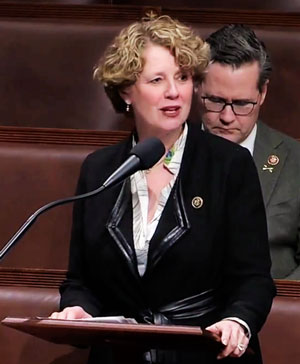The U.S. House of Representatives on Tuesday passed H.R. 2153, Keeping Girls in School Act, legislation authored by Congresswomen Susan W. Brooks (R-Ind.) and Lois Frankel (D-Fla.) to support the educational empowerment of girls globally.
Click here to watch Brooks’ remarks on the House floor.
“We know that education is key to helping girls and women around the world achieve parity and equality of opportunity as well as live long, healthier lives,” said Brooks. “Unfortunately, over 130 million girls and women worldwide face significant obstacles in accessing and remaining in secondary education. Whether that obstacle be safely traveling to school, forced child marriage, or access to nutrition, the Keeping Girls in School Act works to support the economic and educational empowerment of girls globally by targeting these and other barriers. I am encouraged by the House passing this critically important legislation, and I look forward to working with my Senate colleagues to get this passed into law.”

Rep. Susan Brooks recently spoke on the House floor in support of the Keeping Girls in School Act. Click here to listen to her remarks. (Photo provided)
Background
The Keeping Girls in School Act focuses on closing the gender gap for adolescent girls and keeping them in school at the secondary level, a time when girls are most at risk of dropping out of school due to forced marriage, pregnancy and other family pressures. The economic benefits of girls’ education are substantial and can help lift households, communities and nations out of poverty. Keeping girls in secondary school could*:
- Add $92 billion to the economies of low and middle-income nations;
- Cut child deaths by 50 percent;
- Reduce child marriage by 66 percent;
- Decrease violent conflict by 37 percent; and
- Increase girls’ future wages by up to 20 percent for every year enrolled.
Specifically, the Keeping Girls in School Act:
- Outlines and highlights a non-exhaustive list of 14 barriers that girls face in entering and remaining in secondary education institutions.
- Authorizes a budget neutral funding mechanism where USAID is directed to enter into results-based financing and/or traditional grant project proposals to reduce these barriers adolescent girls face. These proposals will utilize public-private partnerships, development impact bonds, and other innovative financing mechanisms to leverage real results with measurable outcomes.
- Requires that the U.S. Global Strategy to Empower Adolescent Girls be reviewed and updated every five years.
Full text of the legislation can be found here.
Additionally, dozens of civil, human and women’s rights organizations have endorsed the Keeping Girls in School Act. The list can be found here.
*Statistics are according to UNESCO, the Education Policy and Data Center, CARE, the Global Partnership for Education and the World Bank.
